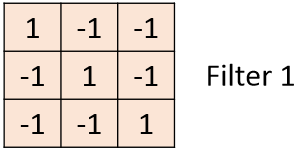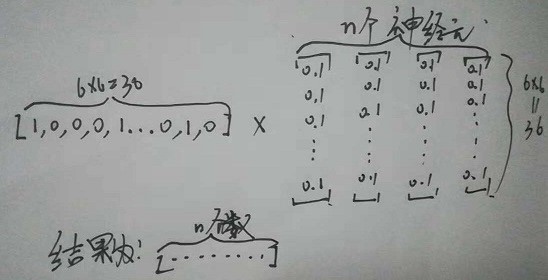CNN的卷积层和普通神经网络全连接层对比
为了过渡,首先看一下这篇笔记
举例: 只有一个数据:$6\times6$,$Filter:3\times3$,如图所示:


全连接神经网络

参数数量为 $(6\times 6+1)\times n$
CNN

参数数量为 $(3\times 3+1)\times n$
对比
可以很明显的看出,其实两者相差并不很多,其实feather map数量就是全连接层中的神经元数量,由于每个神经元所含参数只有9个,不能像全连接(每个神经元36个参数)那样按照矩阵相乘想乘得到一个数字,因此是用卷积的方式得到一个feather map,卷积过程中36个数据共享9个参数。
其他
- 很明显,通过卷积+池化+全连接层也能反向传播
- 其实能学到东西,关键在于初始化$Weights$,在普通全连接神经网络中:
1 | def add_layer(inputs, in_size, out_size, activation_function=None): |
在cnn的卷积层中:
1 | def conv2d(input, shape, activation_function): |
也就是说,同一层中多个神经元的参数初始化是随机的,千万不能初始化为同一个值,这样会导致每个神经元的输出永远相同,也就是每个神经元学到的东西是相同的!!!每个神经元初始化Weights的不同是每个神经元学到不同特征的前提.
